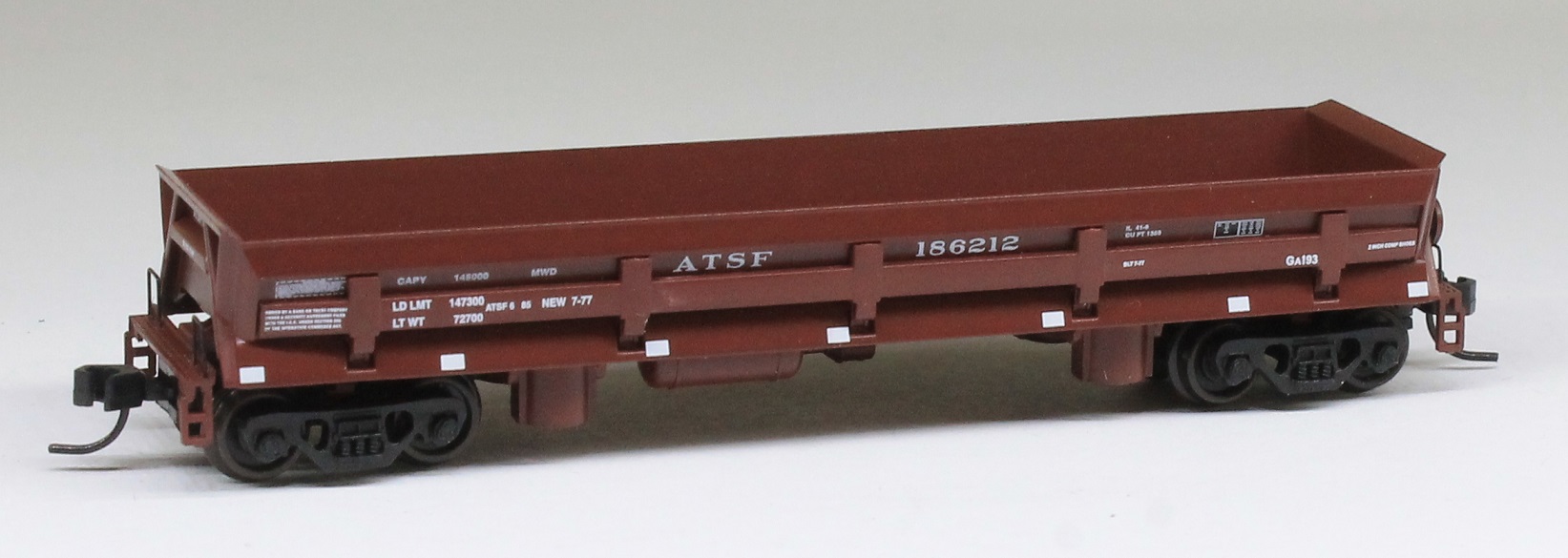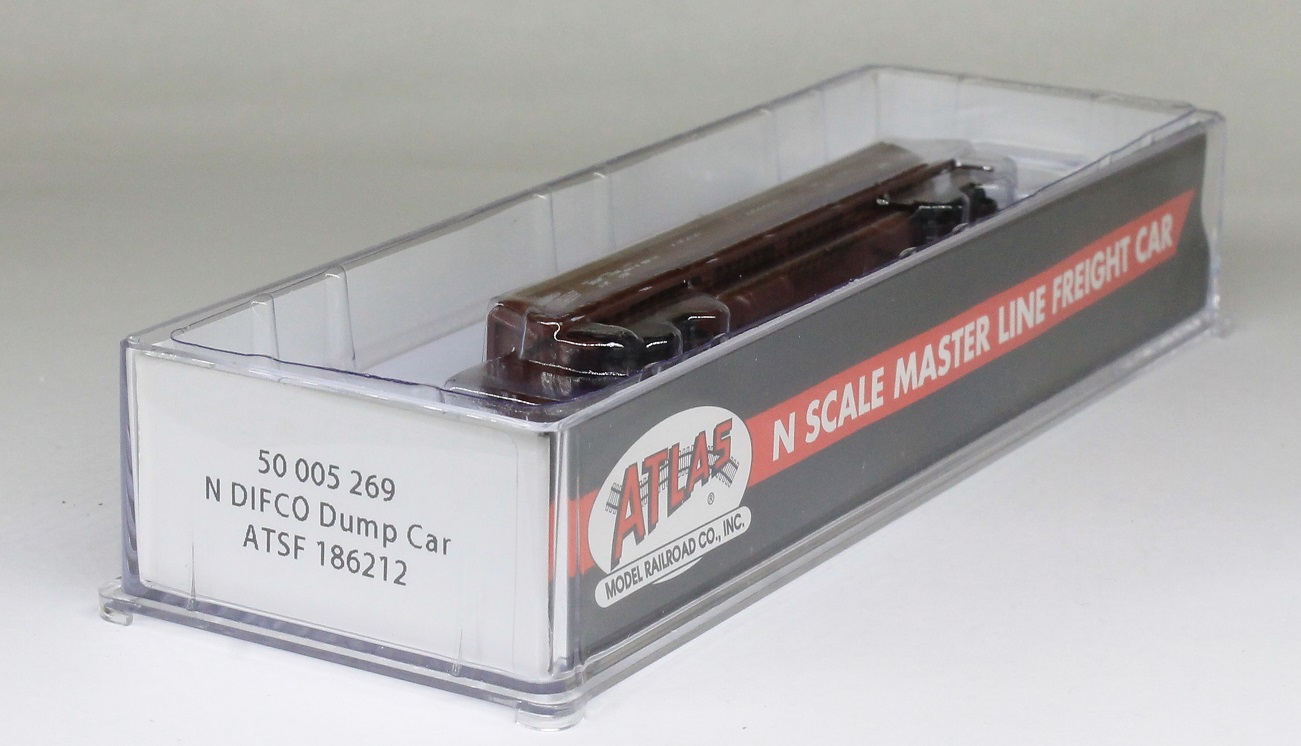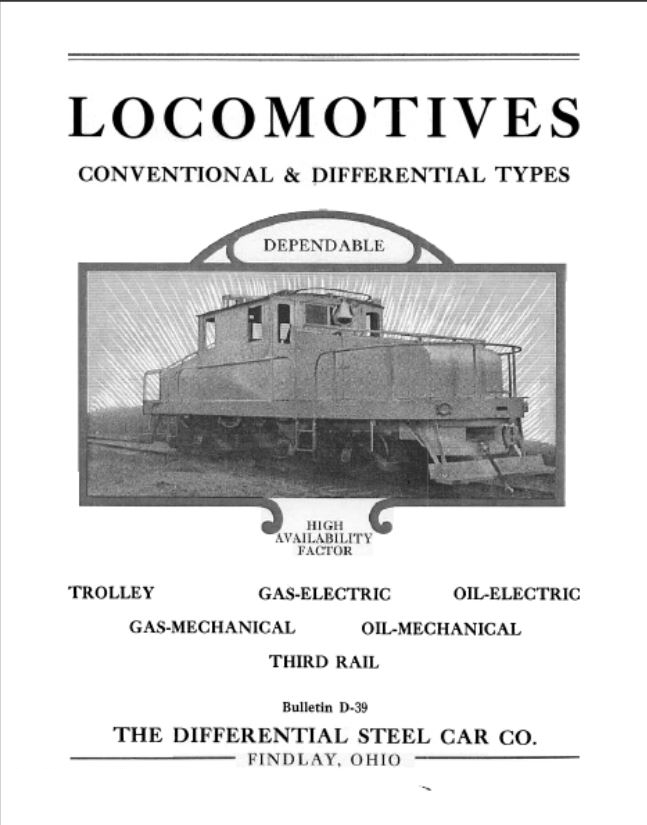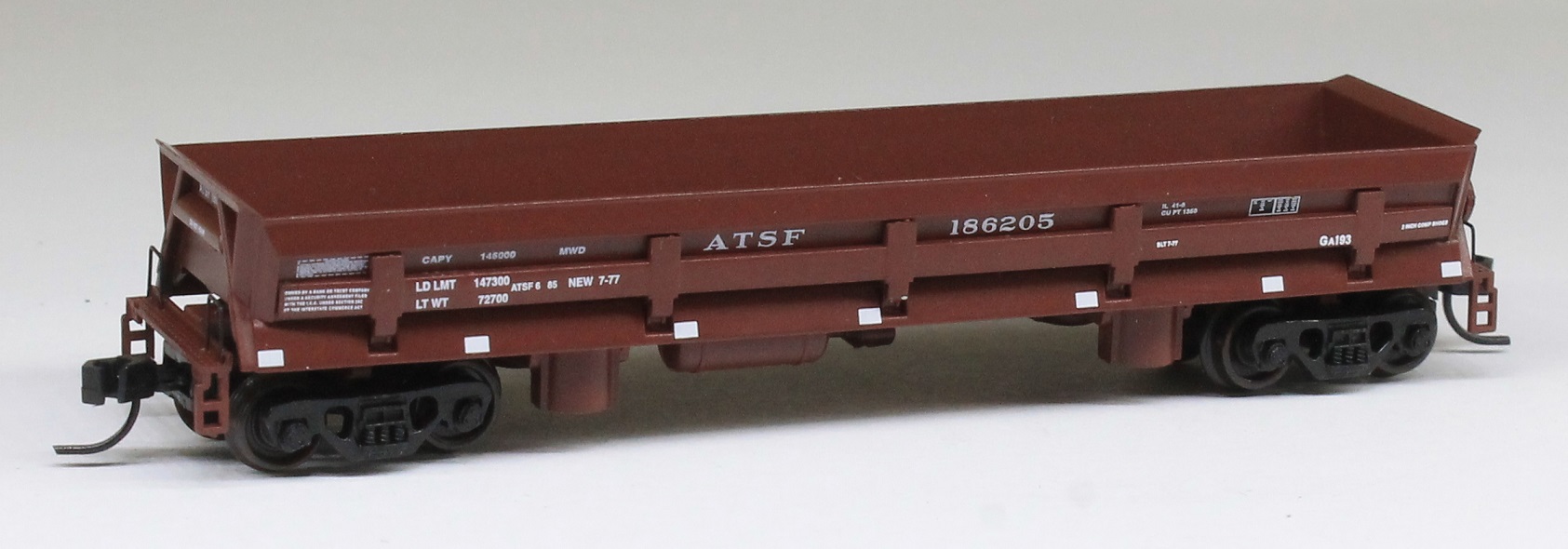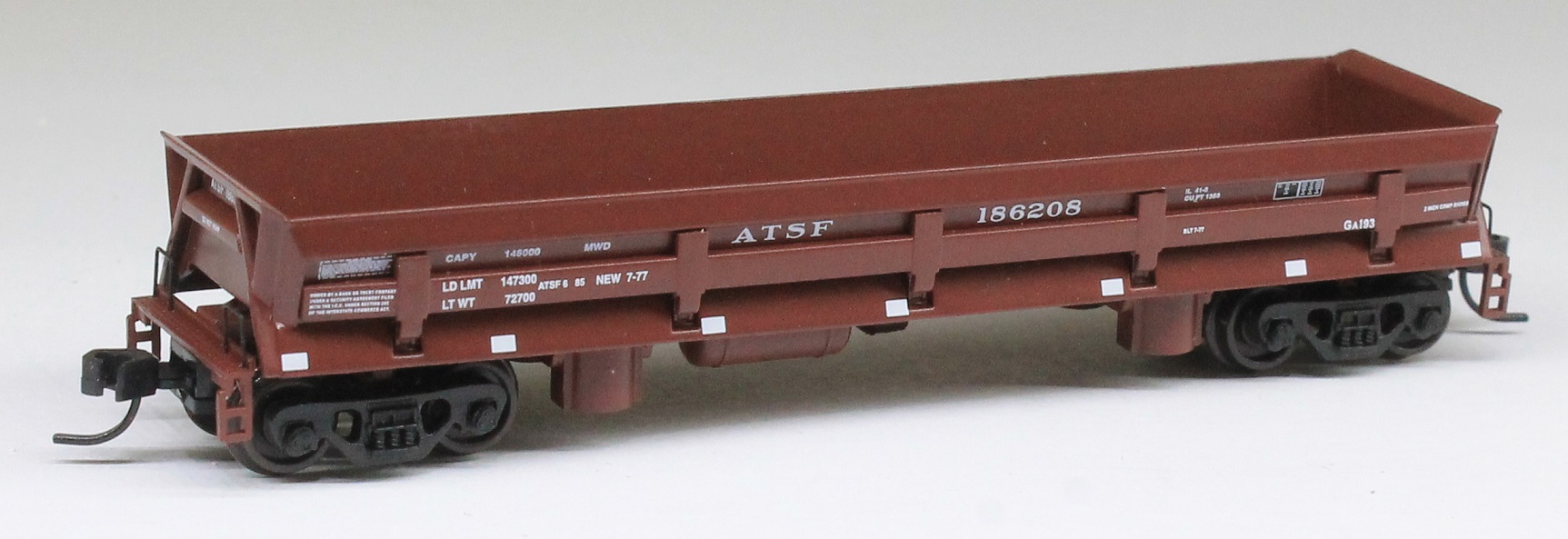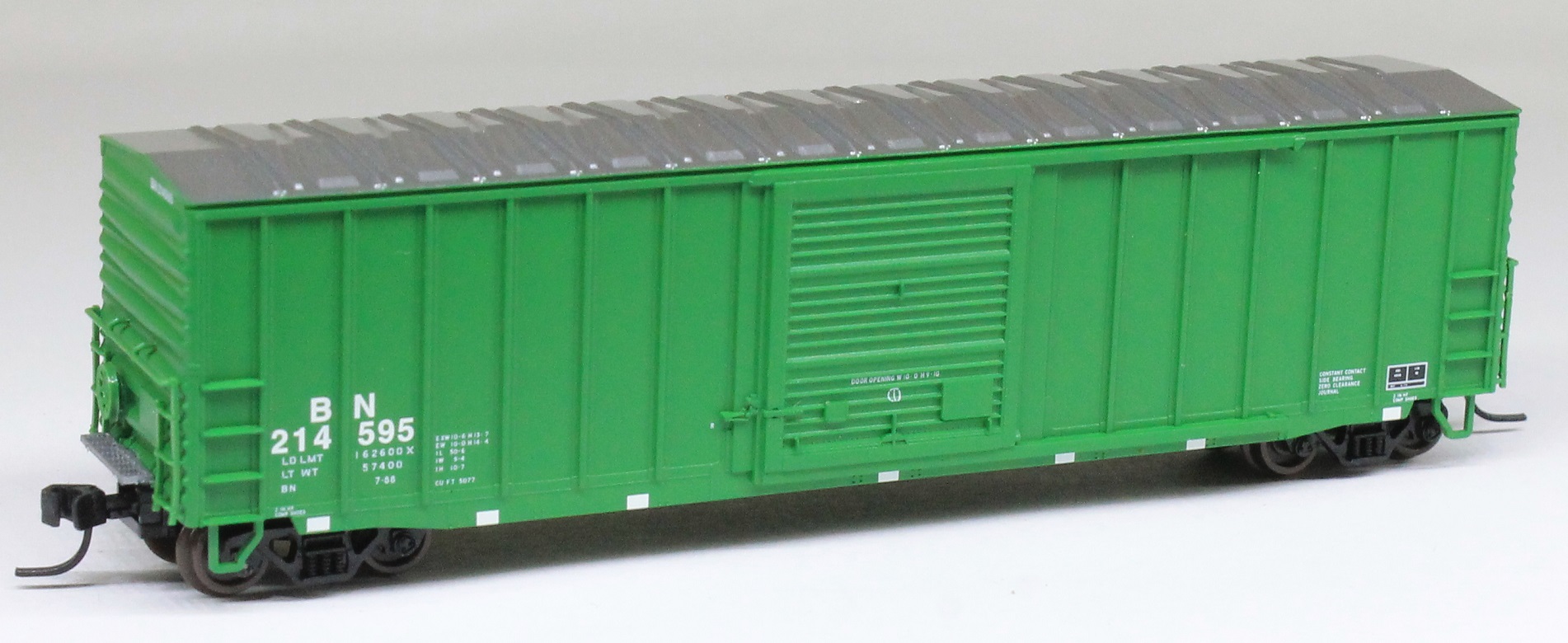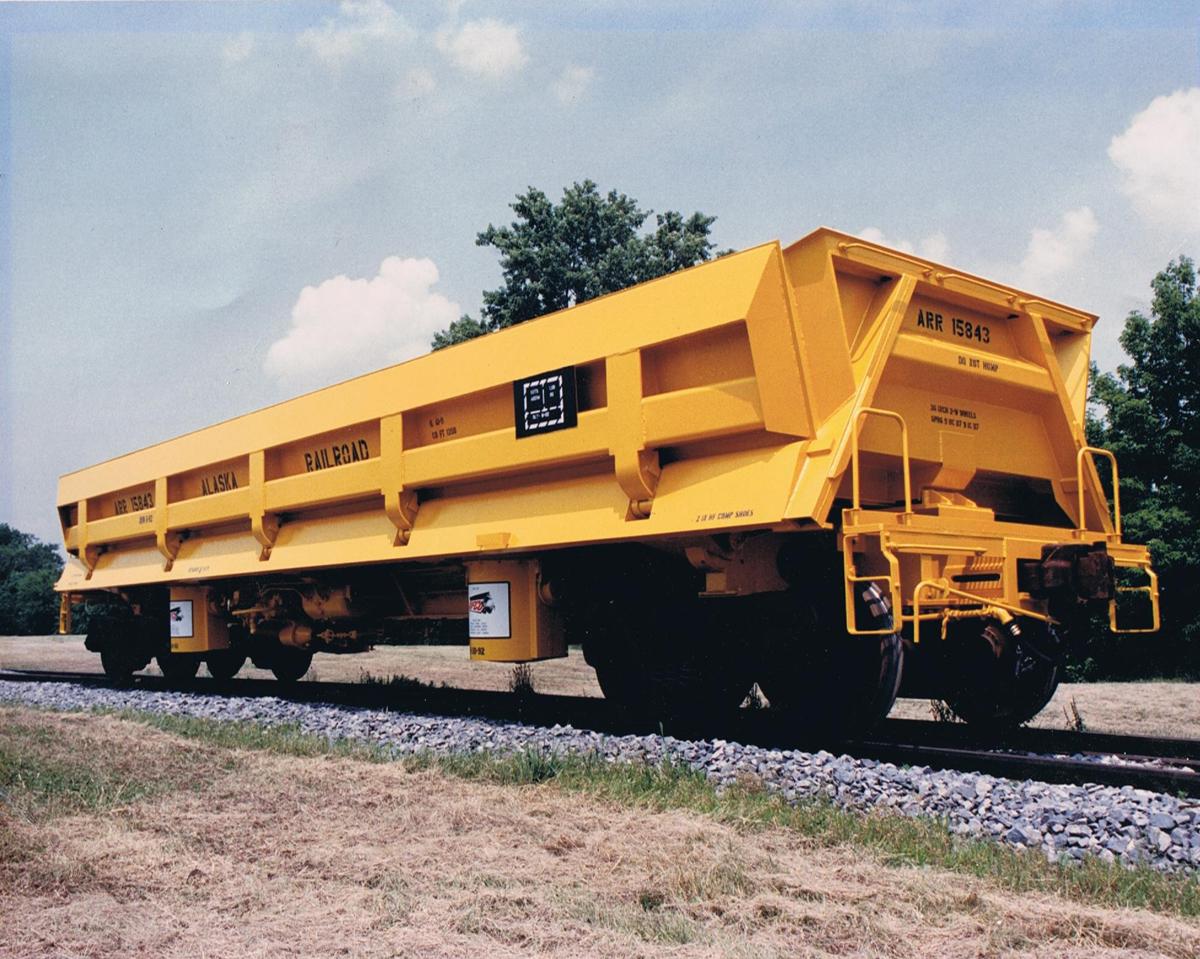Specific Item Information: The Atlas Difco Side-Dump Car is an integral part of any work train. The railroad equivalent of a dump truck, the Difco car is designed to carry up to 100 tons of ballast, fill or rip rap. Each prototype car is fitted with large pneumatic cylinders and side doors, and can dump to the left or right of the tracks. While used primarily in work train service for dumping, Difco Side-Dump Cars can also be used in revenue service to carry sand, gravel, cinders, coal, limestone and other loose bulk materials used in industry. This car features a detailed injection-molded body, accurate decoration, appropriate 100-ton roller bearing trucks and magnetic knuckle couplers.
Model Information: First released in February 2007. Re-run several times.
Walthers ready-to-run N Scale Difco Dump Cars feature a detailed, injection-molded styrene body mounted on a heavy diecast metal chassis with realistic hydraulic cylinder detail for a low center of gravity and reliable tracking. Details include fine-profile end stirrups and factory-installed wire handrails. Each car comes fully assembled and features Accumate® working knuckle couplers mounted on appropriate free-rolling trucks. Cars are available individually and in limited-run three-packs for a total of four roadnumbers per roadname; an undecorated version will also be available.
Matching Rip Rap Load: Walthers 933-802
Walthers ready-to-run N Scale Difco Dump Cars feature a detailed, injection-molded styrene body mounted on a heavy diecast metal chassis with realistic hydraulic cylinder detail for a low center of gravity and reliable tracking. Details include fine-profile end stirrups and factory-installed wire handrails. Each car comes fully assembled and features Accumate® working knuckle couplers mounted on appropriate free-rolling trucks. Cars are available individually and in limited-run three-packs for a total of four roadnumbers per roadname; an undecorated version will also be available.
Matching Rip Rap Load: Walthers 933-802
Prototype History: These very distinctive cars are the railroad equivalent of a dump truck. Designed to carry up to 100 tons, they are fitted with large pneumatic cylinders and side doors, and can dump to the left or right of the tracks. While used primarily in work train service for dumping ballast, fill and rip rap, they can also be used in revenue service to carry sand, gravel, cinders, coal, limestone and other loose bulk materials used in industry.
Road Name History: The Atchison, Topeka and Santa Fe Railway (reporting mark ATSF), often abbreviated as Santa Fe or AT&SF, was one of the larger railroads in the United States. Chartered in February 1859, the railroad reached the Kansas-Colorado border in 1873 and Pueblo, Colorado, in 1876. To create a demand for its services, the railroad set up real estate offices and sold farm land from the land grants that it was awarded by Congress. Despite the name, its main line never served Santa Fe, New Mexico, as the terrain was too difficult; the town ultimately was reached by a branch line from Lamy.
The Santa Fe was a pioneer in intermodal freight transport, an enterprise that (at one time or another) included a tugboat fleet and an airline (the short-lived Santa Fe Skyway). Its bus line extended passenger transportation to areas not accessible by rail, and ferryboats on the San Francisco Bay allowed travelers to complete their westward journeys to the Pacific Ocean. The ATSF was the subject of a popular song, Harry Warren & Johnny Mercer's "On the Atchison, Topeka and the Santa Fe", written for the film, The Harvey Girls (1946).
The railroad officially ceased operations on December 31, 1996, when it merged with the Burlington Northern Railroad to form the Burlington Northern & Santa Fe Railway.
Read more on Wikipedia.
The Santa Fe was a pioneer in intermodal freight transport, an enterprise that (at one time or another) included a tugboat fleet and an airline (the short-lived Santa Fe Skyway). Its bus line extended passenger transportation to areas not accessible by rail, and ferryboats on the San Francisco Bay allowed travelers to complete their westward journeys to the Pacific Ocean. The ATSF was the subject of a popular song, Harry Warren & Johnny Mercer's "On the Atchison, Topeka and the Santa Fe", written for the film, The Harvey Girls (1946).
The railroad officially ceased operations on December 31, 1996, when it merged with the Burlington Northern Railroad to form the Burlington Northern & Santa Fe Railway.
Read more on Wikipedia.
Brand/Importer Information: In 1924 Stephan Schaffan, Sr. founded the Atlas Tool Company in Newark, New Jersey. In 1933 his son, Stephan Schaffan, Jr., came to work for his father at the age of sixteen. Steve Jr. built model airplanes as a hobby and frequented a local hobby shop. Being an enterprising young man, he would often ask the owner if there was anything he could do to earn some extra spending money. Tired of listening to his requests, the hobby-store owner threw some model railroad track parts his way and said, "Here, see if you can improve on this".
In those days, railroad modelers had to assemble and build everything from scratch. Steve Jr. created a "switch kit" which sold so well, that the entire family worked on them in the basement at night, while doing business as usual in the machine shop during the day.
Subsequently, Steve Jr. engineered the stapling of rail to fiber track, along with inventing the first practical rail joiner and pre-assembled turnouts and flexible track. All of these products, and more, helped to popularize model railroading and assisted in the creation of a mass-market hobby. The budding entrepreneur quickly outgrew the limitations of a basement and small garage operation. Realizing they could actually make a living selling track and related products, Steve and his father had the first factory built in Hillside, New Jersey at 413 Florence Avenue in 1947. On September 30, 1949, the Atlas Tool Company was officially incorporated as a New Jersey company.
In 1985, Steve was honored posthumously for his inventions by the Model Railroad Industry Association and was inducted into the Model Railroad Industry Hall of Fame in Baltimore, Maryland. In addition, Steve was nominated and entered into the National Model Railroad Association Pioneers of Model Railroading in 1995.
In the early 1990s, the Atlas Tool Company changed its name to Atlas Model Railroad Company, Inc.
In those days, railroad modelers had to assemble and build everything from scratch. Steve Jr. created a "switch kit" which sold so well, that the entire family worked on them in the basement at night, while doing business as usual in the machine shop during the day.
Subsequently, Steve Jr. engineered the stapling of rail to fiber track, along with inventing the first practical rail joiner and pre-assembled turnouts and flexible track. All of these products, and more, helped to popularize model railroading and assisted in the creation of a mass-market hobby. The budding entrepreneur quickly outgrew the limitations of a basement and small garage operation. Realizing they could actually make a living selling track and related products, Steve and his father had the first factory built in Hillside, New Jersey at 413 Florence Avenue in 1947. On September 30, 1949, the Atlas Tool Company was officially incorporated as a New Jersey company.
In 1985, Steve was honored posthumously for his inventions by the Model Railroad Industry Association and was inducted into the Model Railroad Industry Hall of Fame in Baltimore, Maryland. In addition, Steve was nominated and entered into the National Model Railroad Association Pioneers of Model Railroading in 1995.
In the early 1990s, the Atlas Tool Company changed its name to Atlas Model Railroad Company, Inc.
Item created by: CNW400 on 2019-10-21 09:35:31. Last edited by baggedbird on 2024-04-02 17:16:16
If you see errors or missing data in this entry, please feel free to log in and edit it. Anyone with a Gmail account can log in instantly.
If you see errors or missing data in this entry, please feel free to log in and edit it. Anyone with a Gmail account can log in instantly.


